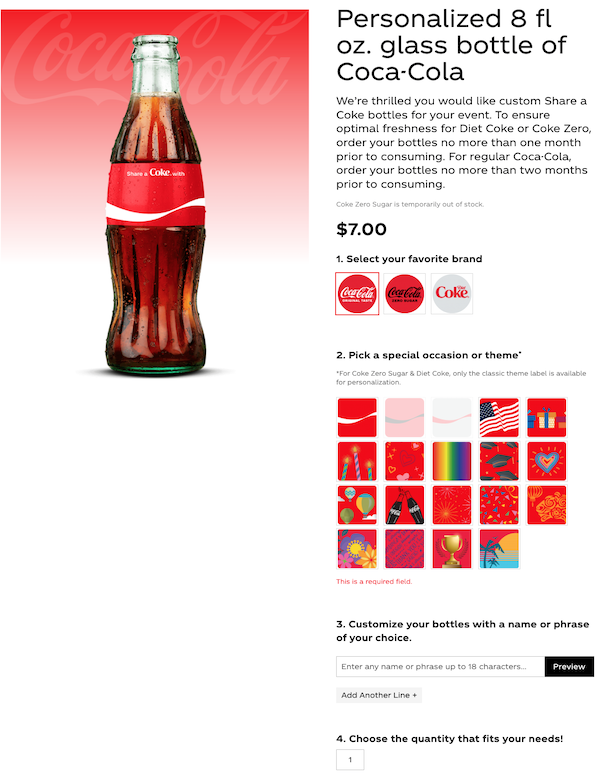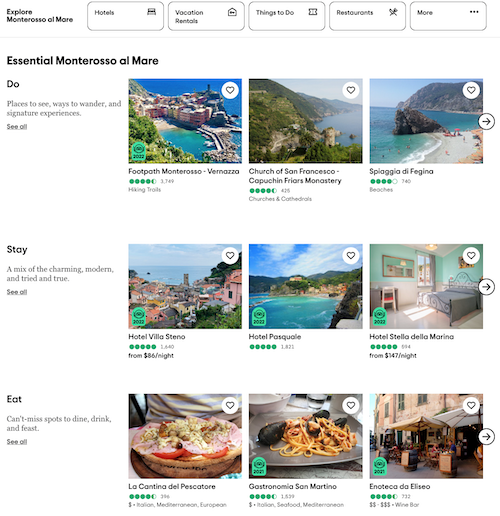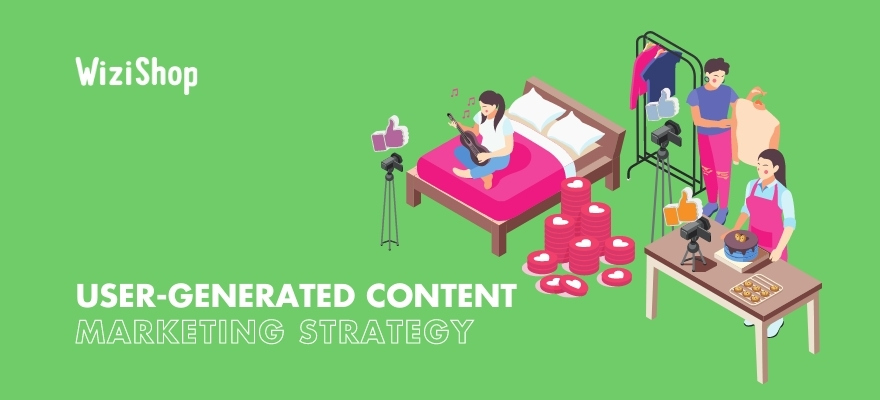Like many e-merchants, you’ve decided to use your customers to enrich your content marketing strategy with user-generated content (UGC). Are they sending you photos of themselves with products from your online store, providing reviews of your new products, answering questions from other internet users, setting up a community chat with other people who may be interested in what you’re selling, etc.? Congratulations! You’ve managed to engage your community and boost your web visibility at the same time.
Photos on social media, Instagram videos, articles on the web, TikTok challenges... What if you offered your customers the opportunity to become the central pillar of your communication? The internet offers endless tools and formats, and users are always sharing: be persuasive!
Definition: What is user-generated content (UGC) and how does it work?
User-generated content, also known as UGC, is a digital marketing plan based on the creation of content by consumers of your brand and visitors to your ecommerce site.
You can include all the publications posted on social media platforms like Facebook, Instagram, Twitter; forums; blogs; video platforms; online photo and video albums; review sites; etc. in UGC.
Here, we’ll see why basing your communication around user-generated content is a popular strategy for brands everywhere and how it can be very beneficial for your website. It’s perhaps even the best advertising campaign you could create around your business, with the help of users and members of your customer base. And this goes far beyond social media!
Top benefits: Why is UGC so important?
With UGC campaigns, you develop your visibility, because all the web content created by the people who’ve purchased a product from you reinforces your web presence. By highlighting the consumer even before your product, you’ll be able to enhance your online store thanks to the values of sharing and recognition that you’ll confer on your brand. Trust is also at the heart of UGC. Let’s take a closer look at this marketing plan for your online store!
Give your customers a voice to grow your customer base
You likely already have a pretty good idea of the power of social media in ecommerce. It’s able to connect brands and consumers in a way that just wasn’t possible in the past.
Consumers who create posts after their purchases on the web are going to want to relay them on their social media networks, to the people in their own communities. In the user-generated content scheme, it's all about “small” communities (close friends, acquaintances, family, and a few extra subscribers, depending on the social media platform).
However, it's best not to underestimate the strength of content shared by personal accounts. These profiles are real vectors of traffic and purchases for brands, and they should be considered as central to your communication plan.
HubSpot tells us that 92% of prospects trust the content published by a person over a brand’s post. In addition, 4 out of 5 consumers buy items that are recommended to them.
Traditional, physical word of mouth has been overturned by content platforms for an audience that’s increasingly demanding authenticity in the reviews they read before purchasing. In fact, if one of your buyers is satisfied with your services and shares it in a post on their social media networks, this user is going to be able to convince one of their close friends or a member of their family very easily. Thanks to one sale, you’ll be able to quickly generate new ones.
According to Photoslurp, images posted by users are five times more likely to convert visitors into buyers! The engagement of these accounts is often important because, even with a hundred subscribers, if these people are all part of the user’s close circle, then the result can pay off.
UGC: What if you were to add it directly to your product pages?
Customer satisfaction is the best indicator for convincing people to buy on your site. But in addition to relaying or re-sharing the posts of users who’ll be able to identify you on content platforms, make the publication of images by your customers a real argument, directly on your merchant site.
More and more brands and online stores allow users to post comments and share visuals and videos to further illustrate their opinion. This is also a great way to let the truth be told, in full transparency, and help to increase trust.
Another technique that can also bring you a positive result: ask your followers who tagged your brand to reuse their content on your site or social media networks, for example. Once you’ve discussed the legal framework and the rights of use of their content with the user, you can include your followers’ best images in your commercial strategy.
This is great proof of creativity on both sides: you let your followers’ imaginations speak for you to communicate about your brand but also and especially about the quality of your services!
A communication plan at a lower cost
Yes, user-generated content, as its concept indicates, isn’t normally paid. Unlike a partnership or an affiliation system, this highlighting resides in the fact that your customers will create content only as a result of their purchases.
Thus, this marketing technique is based solely on a merchant/customer relationship, without any financial incentive. This scheme is then an excellent vector of visibility and conversion, on the sole condition that the returns you receive from your UGC campaigns are positive and rewarding for your brand!
How do you create an effective UGC campaign?
Is your website in dire need of a new lease on life for a more efficient content marketing plan? If you want to opt for this digital marketing lever, you should know that users offer some important advantages.
User-generated content and SEO
Implementing such a marketing tactic can be beneficial for your search engine optimization and for your organic traffic:
- The time spent by users on your pages is going to increase.
- Customers explain and describe their recommendation with precision, and these comments can improve the semantics of your pages and better rank your website in search engines. A contribution for your site that is then going to be able to move up the pages of Google by multiplying the keywords.
- Users provide you with a few written paragraphs or blog articles, adding backlinks to your site, which is gold for your pages!
By opening the door to these spontaneous posts, you’ll maximize the chances for your site to be referenced in the best way on search engines, but also to take the pulse of your service, your catalog, to always improve.
What kind of content works best for a UGC marketing campaign?
The aim of your UGC strategy is going to be to boost engagement and encourage people to leave comments, share photos and videos, talk about your brand on forums, etc. Encourage these internet users to talk about your business and to follow you with the following types of content:
- Contests: By offering the possibility to win one of your objects or services on the occasion of a contest on the networks, for example, the users will, in fact, talk about you and your products in order to win.
- Challenges: Very popular on TikTok, by creating a challenge related to your brand, you can encourage users to create free content to promote your brand.
- Reposting publications: By creating a specific hashtag, you can invite your customers to post content related to your products. On your side, offer the possibility “to repost the best content on the brand's account.” If your professional account has many subscribers, smaller accounts will feel valued by this initiative.
- Reviews with images: Many merchant sites allow users to leave reviews detailing their experiences with brands along with photos to prove to future buyers the quality of the products and/or services. Do the same!
It’s up to you to be creative and use all the tools at your disposal to create a real relationship between your customers and your brand!
Negative comments: A lever to improve your site
To obtain UGC, a brand must deploy a solid digital strategy (contests, ads on social media platforms, etc.) to encourage its buyers to be active. In addition, the brand has to set up some kind of quality control to make sure that the UGC produced by the users respect its editorial line.
Criticism is, of course, quite easy in this day and age, but the interest for brands and merchants is going to be to learn to question themselves while gaining humility. Your service won’t be perfect every day: it’s up to you to deal with bad comments and negative opinions from consumers, if they’re based on real arguments (obviously).
“This coat is big,” “I would have liked to have had 24-hour delivery,” “the customer-service response time is too long”... All these comments are going to help you to correct these anomalies in your organization. It’s then up to you to find the right answers to convince your prospects to have faith in your brand and your product!
3 Examples of inspiring UGC strategies
As a form of content marketing, UGC has the power to transform a brand’s presence on social media platforms and beyond. Whether you’re looking for Instagram post ideas, YouTube inspiration, website content, etc., check out these great content marketing examples with brands' campaigns that make the most of UGC!
Coca-Cola
This is the most influential company in terms of UGC. During major international events, such as soccer tournaments or popular holidays, Coca-Cola encourages its customers to share their posts with its products.
The latest initiative was to personalize the bottle with the word or name of one’s choice and to pose next to the bottle. A worldwide success imagined by great marketing specialists!

McDonald's
The fast-food giant is always looking for UGC. As proof, each new product calls for an invitation for buyers to share their experience. And their strategy is more local than national: many restaurants have their own page on social media platforms, which brings the brand closer to consumers.
In addition, by collaborating with other brands like Monopoly, McDonald’s was able to invite customers to participate in the game set up to win prizes. A 100% winning operation where the user becomes the star. The American giant also created a special platform to collect the memories of its customers in connection with McDonald’s to create an advertisement: smart!
TripAdvisor
The very concept of the site is based on user-generated content: TripAdvisor is the benchmark for customer reviews in the tourism, restaurant and hotel industries. Photos, texts, videos, notes... The floor is entirely left to the user!
The only negative point is that anyone can leave a review, even someone who’s never been to the establishment in question. Although this makes it easy for visitors to engage, an abundance of less-than-authentic reviews could lead to consumers' lessening trust in the website. A possible limit to UGC?

Best practices for a UGC campaign strategy
Now that you know the benefits of using user-generated content for your business and have some examples to inspire you, you may be itching to get started with implementing UGC in your own marketing efforts. As you begin working on your future UGC campaigns, consider following these best practices to help boost your chances of success.
Determine your goals with user-generated content
It's important to decide what you hope to accomplish with a UGC strategy, as this will shape how you curate and leverage this content to support your business objectives. Clear goals ensure that UGC aligns with your brand’s voice, audience engagement strategies, and marketing campaigns.
For example, if your goal is to increase brand loyalty, you might encourage customers to share personal stories about your product. If you aim to boost sales, a UGC campaign could involve customers posting photos using your products in creative ways, coupled with a hashtag or contest.
Provide a clear description of what type of content you want
Ensuring that you give people a clear description of the type of content you want when soliciting user-generated content is crucial for maintaining brand consistency and ensuring that submissions match up with your marketing goals. Clear guidelines help contributors understand your expectations, which increases the likelihood of receiving high-quality, relevant content.
To get specific, clearly define the theme, style, and format you desire. Don't hesitate to use examples to illustrate your points and set explicit boundaries about what user-generated content is acceptable.
In addition, think about specifying the desired tone and any key messages or elements that should be included. This precision not only streamlines the review process or campaign particiation but also enhances the effectiveness of the content when it comes to boosting the engagement of your business's target audience online.
Get permission to use the UGC
It's also important that you obtain permission before using UGC, whether for your website or a social media platform, in order to respect copyright laws and protect your brand from legal issues. This practice ensures that the original creators are acknowledged and their rights are maintained, fostering goodwill and trust between them and your brand.
What's more, securing consent can enhance the authenticity and credibility of your marketing efforts, as it shows that your brand values both its community’s contributions and their legal rights.
Give credit to the original creator of the user-generated content
After having obtained permission to use people's UGC, you'll want to be sure to give credit to the original creator as well. While some brands don't find this to be necessary step, it's actually very crucial, as it respects and acknowledges the creator's intellectual property rights, fostering trust and transparency.
This practice not only enhances your brand's reputation and credibility by demonstrating ethical behavior, but it also encourages a positive community around your brand, motivating more users to share their content. Furthermore, proper attribution can help avoid legal problems related to copyright infringement, ensuring that your brand maintains a respectful and legally compliant online presence.
Offer incentives to share user-generated content
For some brands, it doesn't take much to get customers to participate in their UGC campaigns. The opportunity to be featured on a well-known brand's social media or website may be enough of a reward for many people.
If you're a relatively new brand or have a recently launched social media page, however, you might need to reward community participation by offering extra incentives. Offering incentives for sharing user-generated content is like throwing a fabulous party and making sure everyone leaves with a goody bag—it keeps the buzz alive and your guests happy!
When your brand rewards sharing user-generated content, whether it involves customer reviews, a video for social media, or another kind of content, it not only boosts content visibility but also deepens customer loyalty. You could offer discounts, feature user profiles on your website, or even run contests where the best content wins exciting prizes.
Pro tip: keep your incentives fresh and closely aligned with your audience’s interests. And remember, clarity is key—ensure the rules and rewards are as clear as the bell!
Encourage your team to participate
If you have a team of people working for your business, encouraging your employees to share user-generated content can be an excellent way to boost your UGC campaigns and allow your customers to get a peek at the people behind your brand.
From behind-the-scenes videos that give a sneak peek into daily operations, to heartfelt testimonials singing the praises of their workplace, or even fun-filled snaps at company events—your team members have got the inside scoop.
Let's not forget educational posts where they share expert tips related to your industry. It's authentic, engaging, and showcases the human side of your brand—what’s not to love?
Reuse and repurpose user-generated content
Say that your company runs a UGC campaign on a social media platform like Instagram and you obtain loads of content from your followers with the help of having created a special branded hashtag. It would be a shame to only use this user-generated content to repost on Instagram... Why not try and get as much use out of it as possible?
After having gotten permission from users to use their content of course, consider reusing and repurposing it to further bolster your marketing strategy. This can be done in a variety of ways:
- Advertising campaigns: Leveraging customer-created content can enhance the authenticity and relatability of your business's advertisements across social media, websites, or other platforms. A picture or video isn't always necessary—often, a simple tweet from a customer commending your brand and sharing positive experiences can serve as sufficient evidence.
- Website pages: As mentioned earlier, using customer content on your site's product pages can help prospective buyers better visualize what products look like being used in real-life situations. In addition, you might opt to create a special customer review page on your site, highlighting the reviews you receive from your satisfied customers!
- Email newsletters: Adding customer reviews or other user-generated content to your newsletters is a great way to engage your subscribers and shine the spotlight on authentic customer experiences with your business.
From UGC to IGC?
If you like the idea of using UGC to promote your brand or product, you should try influencer-generated content (IGC): influencers’ content will certainly tempt you because it allows you to go further than UGC. The content is generated by influencers around a brand, a product, or a company towards their communities of subscribers or fans.
They know how to integrate perfectly into your editorial line and bring you incomparable visibility with the content they share and post, for an affordable cost and a good return on investment.
However, be careful not to oppose IGC and UGC. The two types of profiles are very complementary. Both help you enrich your ecommerce content marketing in an innovative way.
With the former, you work mainly on your visibility and your e-reputation, by reaching, thanks to the Instagram influencer, for example, an audience you wouldn’t have had access to otherwise. And with the latter, you engage people in your own community, to reinforce their attachment to your brand. So don’t hesitate to consider both strategies in parallel!










